
Filter News
Area of Research
- Biology and Environment (12)
- Computational Biology (1)
- Energy Science (9)
- Fusion and Fission (19)
- Fusion Energy (4)
- Isotopes (2)
- Materials (19)
- Materials for Computing (1)
- National Security (10)
- Neutron Science (6)
- Nuclear Science and Technology (16)
- Quantum information Science (2)
- Supercomputing (27)
News Type
News Topics
- (-) Artificial Intelligence (77)
- (-) Microscopy (23)
- (-) Nuclear Energy (66)
- (-) Security (16)
- (-) Software (1)
- 3-D Printing/Advanced Manufacturing (56)
- Advanced Reactors (12)
- Big Data (45)
- Bioenergy (68)
- Biology (80)
- Biomedical (42)
- Biotechnology (25)
- Buildings (30)
- Chemical Sciences (35)
- Clean Water (16)
- Composites (11)
- Computer Science (111)
- Coronavirus (19)
- Critical Materials (5)
- Cybersecurity (14)
- Education (2)
- Emergency (3)
- Energy Storage (32)
- Environment (116)
- Exascale Computing (51)
- Fossil Energy (6)
- Frontier (44)
- Fusion (38)
- Grid (32)
- High-Performance Computing (81)
- Hydropower (6)
- Isotopes (33)
- ITER (4)
- Machine Learning (37)
- Materials (51)
- Materials Science (55)
- Mathematics (8)
- Mercury (7)
- Microelectronics (3)
- Molten Salt (2)
- Nanotechnology (17)
- National Security (60)
- Neutron Science (82)
- Partnerships (36)
- Physics (34)
- Polymers (9)
- Quantum Computing (35)
- Quantum Science (48)
- Simulation (42)
- Space Exploration (13)
- Statistics (2)
- Summit (40)
- Transportation (30)
Media Contacts
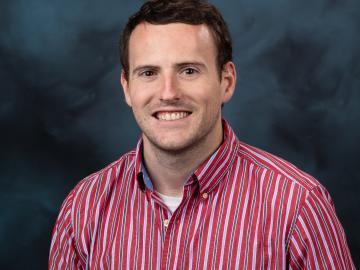
Andrew Conant from ORNL's nuclear nonproliferation division is collaborating with national laboratories to analyze isotopes generated in nuclear reactors. This research aims to glean insights into the operations and objectives of these reactors. ORNL, renowned for its leadership in nuclear research, maintains its legacy by promoting the peaceful utilization of nuclear energy worldwide.
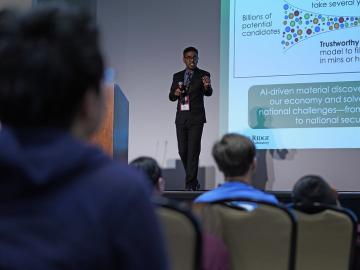
Prasanna Balaprakash, a national leader in artificial intelligence, or AI, spoke to some of the highest achieving students in the country at the National Science Bowl in Washington D.C.
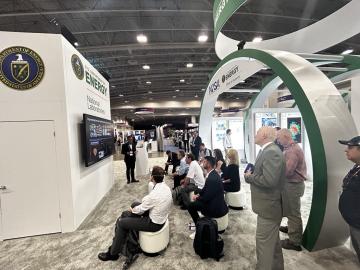
ORNL researchers and communications specialists took part in the inaugural AI Expo for National Competitiveness in Washington D.C, May 7 and 8, to showcase and provide insight into how the lab is leading the way for utilizing the vast possibilities of AI.

John Lagergren, a staff scientist in Oak Ridge National Laboratory’s Plant Systems Biology group, is using his expertise in applied math and machine learning to develop neural networks to quickly analyze the vast amounts of data on plant traits amassed at ORNL’s Advanced Plant Phenotyping Laboratory.

Researchers set a new benchmark for future experiments making materials in space rather than for space. They discovered that many kinds of glass have similar atomic structure and arrangements and can successfully be made in space. Scientists from nine institutions in government, academia and industry participated in this 5-year study.

Researchers tackling national security challenges at ORNL are upholding an 80-year legacy of leadership in all things nuclear. Today, they’re developing the next generation of technologies that will help reduce global nuclear risk and enable safe, secure, peaceful use of nuclear materials, worldwide.

A team led by researchers at ORNL explored training strategies for one of the largest artificial intelligence models to date with help from the world’s fastest supercomputer. The findings could help guide training for a new generation of AI models for scientific research.
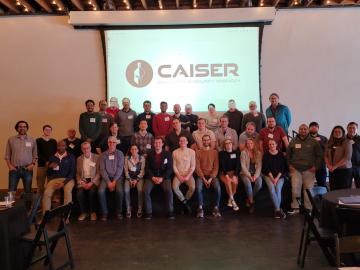
Researchers at the Department of Energy’s Oak Ridge National Laboratory met recently at an AI Summit to better understand threats surrounding artificial intelligence. The event was part of ORNL’s mission to shape the future of safe and secure AI systems charged with our nation’s most precious data.

Mohamad Zineddin hopes to establish an interdisciplinary center of excellence for nuclear security at ORNL, combining critical infrastructure assessment and protection, risk mitigation, leadership in nuclear security, education and training, nuclear security culture and resilience strategies and techniques.
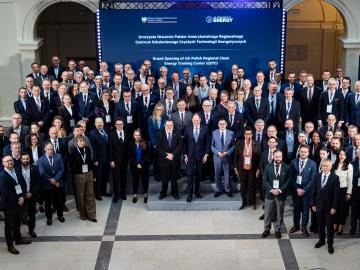
Four ORNL researchers traveled to Warsaw, Poland, during the first week of April to support the opening of Poland’s first Clean Energy Training Center, a regional hub dedicated to providing workforce development and training to expand new nuclear


